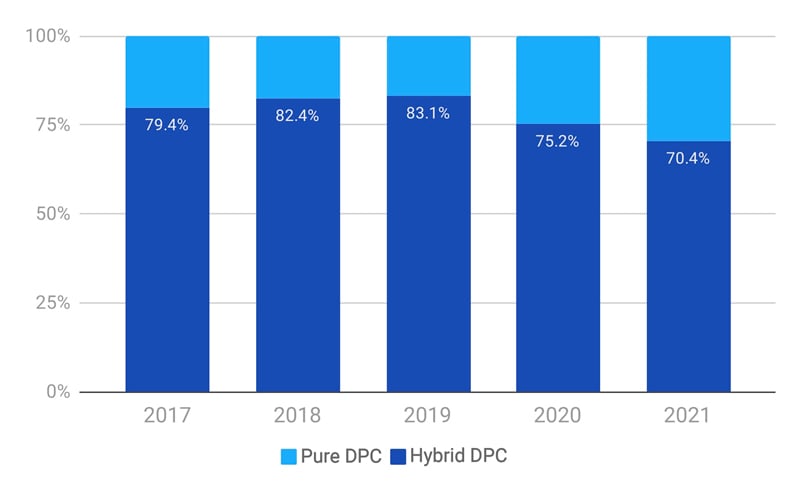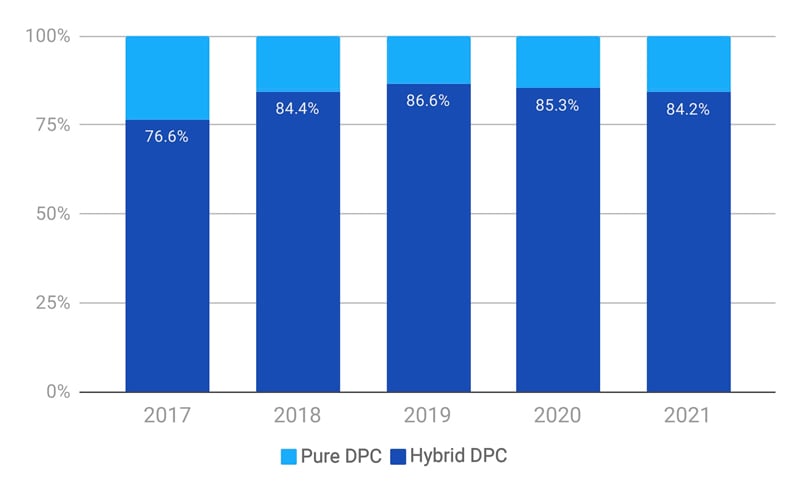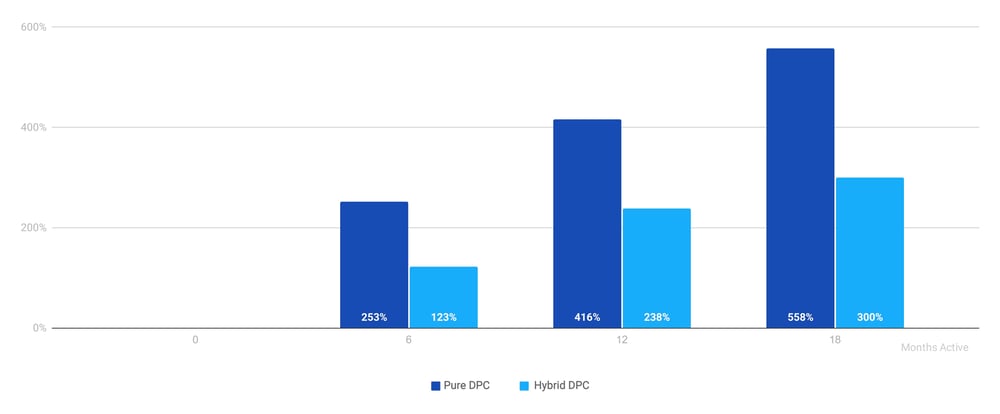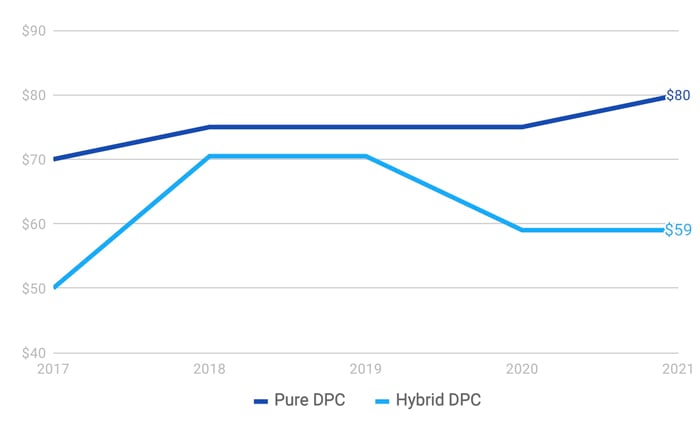Within the world of Direct Primary Care there are two common models of care: “pure” DPC and “hybrid” DPC. While definitions vary, we at Hint generally think of a pure DPC as a practice that is paid directly by their patients without seeking reimbursement from health insurance for any services. A hybrid DPC practice has a subset of patients paying directly for services via membership, with an additional panel of patients paying for services through traditional health insurance. For more information on what makes a DPC a hybrid practice visit our About DPC page and read our past blog post, Understanding DPC Hybrid. Many providers looking to get into DPC wonder which model is best for them. What follows is an analysis of trends among hybrid practices and how they compare to pure DPC practices.
Pure DPC is more prevalent among DPC practices using HintOS: in 2021, 70% of DPC practices were pure and 84% of DPC members were affiliated with a pure DPC practice. This isn’t surprising since primary care clinicians are often looking for ways to free themselves from the administrative burden of seeking reimbursement for each service they provide. With a hybrid model, clinicians can find themselves having to offer varying levels of time and care depending on whether the patient is paying via their insurance or is a member.
Still, many practices choose a hybrid DPC model so that they can continue to operate with their usual fee-for-service revenue while they build their membership-based patient panel. Some practices on HintOS take this approach as they slowly transition to a pure DPC model, while others have designed their practice to operate as a hybrid indefinitely.
One of the largest hybrid practices powered by HintOS is Medallus Medical based in Utah with a few thousand members. Medallus has urgent care facilities and primary care clinics, which provide patients with the flexibility to use their insurance, pay out-of-pocket per service, or join as a member and save. Medallus has 8 locations in Utah and their membership fee begins at $50 per member per month with an additional $10 fee per visit. Another relatively large hybrid practice on HintOS is Anovia Health, which launched just last year and has a few hundred members with 2 locations in Wisconsin.
Coupet Quality Clinic is a smaller hybrid practice with a couple hundred members located in Pompano Beach, FL but our data shows that this is more typical for hybrid practices. A majority of hybrid practices (54%) have fewer than 150 membership patients. Overall, hybrid DPC practices have fewer members than pure DPCs with an average of 275 members per practice compared to 623 among pure DPCs, a trend that has been consistent over time.
Active Pure DPCs vs Hybrid DPCs on HintOS

Active Pure DPC vs Hybrid DPC Members on HintOS

Hybrid DPCs likely have fewer DPC members since only a portion of their total patient panel is membership based. This means hybrid DPCs must also manage traditional insurance patients while pure DPCs are able to focus on growing their membership patient panel. This difference is evident in member growth rates. After operating for 18 months, a pure DPC practice can expect a 558% increase in the median number of active members from when they started operating on HintOS compared to a 300% member increase among hybrid DPC practices.
Median Percent Change in DPC Membership After 18 Months

Lastly, hybrid practices not only have fewer members but also lower membership fees. In 2021, a hybrid DPC membership was about 25% cheaper than a pure DPC membership. Hybrid practices may charge less since they are able to supplement their income through traditional fee-for-service patients. Another possible reason is Hybrid practices may need to price memberships lower to attract patients to become members instead of opting to receive care through their health insurance. Regardless, hybrid DPC memberships have consistently been cheaper than pure DPC memberships, settling at a median of $59 per month ($21 lower than pure DPC) in recent years.
Change in Median Membership Cost

In summary, while hybrid DPC is a viable sub-model of direct primary care, it is a smaller movement with distinct trends in growth and pricing. Pure DPC practices grow nearly twice as fast and charge $20-$30 more for a monthly membership. Hybrid practices only account for about a quarter of DPC practices on HintOS and on average have about a third of the patients per practice compared to a pure DPC. For more information on DPC, download our Direct Care Brief.
To learn more about Trends among DPC Practices, be sure to download the Trends in Direct Primary Care Report 2022.

